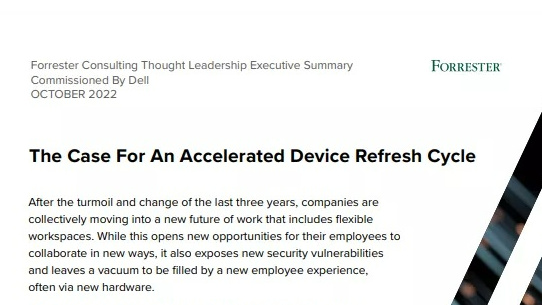The importance of sound quality in remote collaboration
The pandemic has shown how important audio for a hybrid workforce

Much has been made of the 21st century’s digitally driven technological change and how it has revolutionised the way we connect. But rewind the clock a little further and, arguably, the transmission of audio signals represents the most critical communication breakthrough. From telephones to microphones, radios and speaker systems, we’ve been finding ways to talk to and hear each other (sometimes over vast distances) for well over 100 years.
This has been hugely beneficial to businesses. Today, as organisations have started to emerge from the pandemic (many adopting a hybrid approach to work), keeping staff working together effectively is more important than it’s ever been. AV technology has certainly helped enable this, delivering clear, high-quality audio so organisations can communicate seamlessly wherever they are in the world.
As we increasingly rely on video calls and teleconferencing for remote working, it’s easy to take for granted just how important audio is in this equation. Real-time video has helped to make meeting attendees feel like they’re all participating together in a single place, but if the audio connection breaks down it can disrupt the flow and outcome of a collaboration immediately.
A suitable audio setup often gets left out of IT decision makers’ considerations, but as we venture into a new working environment – one where physical meeting rooms are paired with remote communication services – it’s well worth making it a top priority.
Reaping the benefits
By implementing an effective, high-quality audio [FM1] system, an organisation should soon begin to see the rewards. Meetings with crystal-clear audio will mean productivity is boosted by clearer lines of communication, and teams can be brought together faster and more frequently to drive forward towards specific goals.
There are cost benefits when it comes to business travel, too. In the pre-pandemic days these expenses, both time and monetary, could soon add up. Get the right technology in place, though, and you can replace many physical meetings with voice or video conferencing, cutting unnecessary costs associated with travel and freeing up time to be used elsewhere.
It also helps to maintain a connection with employees, particularly those who are working outside of the physical office location. More effective, dynamic and useful meetings can help boost employee satisfaction and team camaraderie, and build a wider sense of ownership of projects or objectives. They can also help resolve conflicts quickly and break down silos between teams or departments. Being able to foster proper communication between colleagues is key to making a hybrid approach work.
There is no one-size-fits-all hardware solution to business audio. Different types of meeting rooms will present different requirements and challenges. However, whether it’s a small meeting room, a conference or boardroom, or a huddle space, there are consistent challenges you’re likely to encounter.
Knowing the obstacles
Many rooms suffer from poor acoustics, making speech difficult to understand over background noise. Rustling of paper, laptop fans and even sound from other meeting rooms can be picked up. Plus, hard surfaces and echoes leave voices sounding thinner and brighter, while reverberations can create layers of competing sound.
Clearing these hurdles isn’t easy. You’ll need to choose the right system for the specific environment, and consider technologies that specialise in speech over background noise, processing the incoming audio and lifting the voice out of the overall sound mix.
Seeking out audio expertise is advisable here, particularly when it comes to getting the correct equipment and microphones in place. Turning to a specialist like Shure can help you establish the right technology for the right meeting room setup. With almost 100 years of audio experience, Shure creates an environment that enables superior audio while reducing background noise. Whether it’s boundary, gooseneck, ceiling or table array microphones, Shure is well versed in equipping businesses with the audio technology needed to enable effective collaboration. Its cutting-edge Stem Ecosystem and Microflex Ecosystem product lines offer solutions that aim to cover any organisation’s conferencing needs.
Stem Ecosystem portfolio is a straightforward, cost-effective offering that can scale into standard meeting rooms quickly, consisting of a soundbar, tabletop speaker phone, ceiling array, external speaker, control hub and a controller that allows remote management of the entire organisation’s platform. Microflex Ecosystem products, meanwhile, offer a system of mics, loudspeakers and DSP (digital signal processing) software to optimise best-in-class audio for a wide variety of complex room types.
Any conferencing solution needs to ensure it can handle the new, post-pandemic way of working. Organisations must offer their employees, customers and partners a system to communicate effectively, whether they’re physically together in the same meeting space, dialling in remotely or a mixture of both. Audio should sit at the heart of this solution – if video drops you still have a conference, but without audio you don’t have true communication or effective collaboration.
Download The IT Pro Guide to Audio Collaboration to learn more about the value of sound
Sign up today and you will receive a free copy of our Future Focus 2025 report - the leading guidance on AI, cybersecurity and other IT challenges as per 700+ senior executives
ITPro is a global business technology website providing the latest news, analysis, and business insight for IT decision-makers. Whether it's cyber security, cloud computing, IT infrastructure, or business strategy, we aim to equip leaders with the data they need to make informed IT investments.
For regular updates delivered to your inbox and social feeds, be sure to sign up to our daily newsletter and follow on us LinkedIn and Twitter.
-
 Trump's AI executive order could leave US in a 'regulatory vacuum'
Trump's AI executive order could leave US in a 'regulatory vacuum'News Citing a "patchwork of 50 different regulatory regimes" and "ideological bias", President Trump wants rules to be set at a federal level
-
 TPUs: Google's home advantage
TPUs: Google's home advantageITPro Podcast How does TPU v7 stack up against Nvidia's latest chips – and can Google scale AI using only its own supply?
-
 'Digital hide-and-seek': Workers are wasting hundreds of hours a year sourcing the information they need to carry out their role
'Digital hide-and-seek': Workers are wasting hundreds of hours a year sourcing the information they need to carry out their roleNews Knowledge workers globally are wasting a quarter of their working week tracking down information, new research from Atlassian has revealed.
-
 Untethered: How CIOs and CISOs are paving the way for the new hybrid workforce
Untethered: How CIOs and CISOs are paving the way for the new hybrid workforceWhitepaper Effective techniques to transition from exposed legacy infrastructure to an effective zero trust strategy
-
 Unlocking the power of your digital services
Unlocking the power of your digital servicesSponsored Businesses have invested significant cash into technology since COVID-19, but are they really getting their money's worth?
-
 Delivering fast and secure digital experiences for the modern hybrid workforce
Delivering fast and secure digital experiences for the modern hybrid workforceWhitepaper A new approach to digital experience monitoring that can monitor the health of all systems
-
 Collaboration is the glue that holds your business together
Collaboration is the glue that holds your business togetherSPONSORED A combination of productivity tools and cloud telephony can enable the best from your workforce
-
 The future of work and the forgotten workforce
The future of work and the forgotten workforcewhitepaper How to deploy a mobile-first strategy so no one gets left behind
-
 The case for an accelerated device refresh cycle
The case for an accelerated device refresh cycleWhitepaper Achieving a more cost-effective device lifecycle overall
-
 Employees are choosing how they work
Employees are choosing how they workWhitepaper And with the right secure digital strategy, this could be a great thing for your business: today and far into the future

